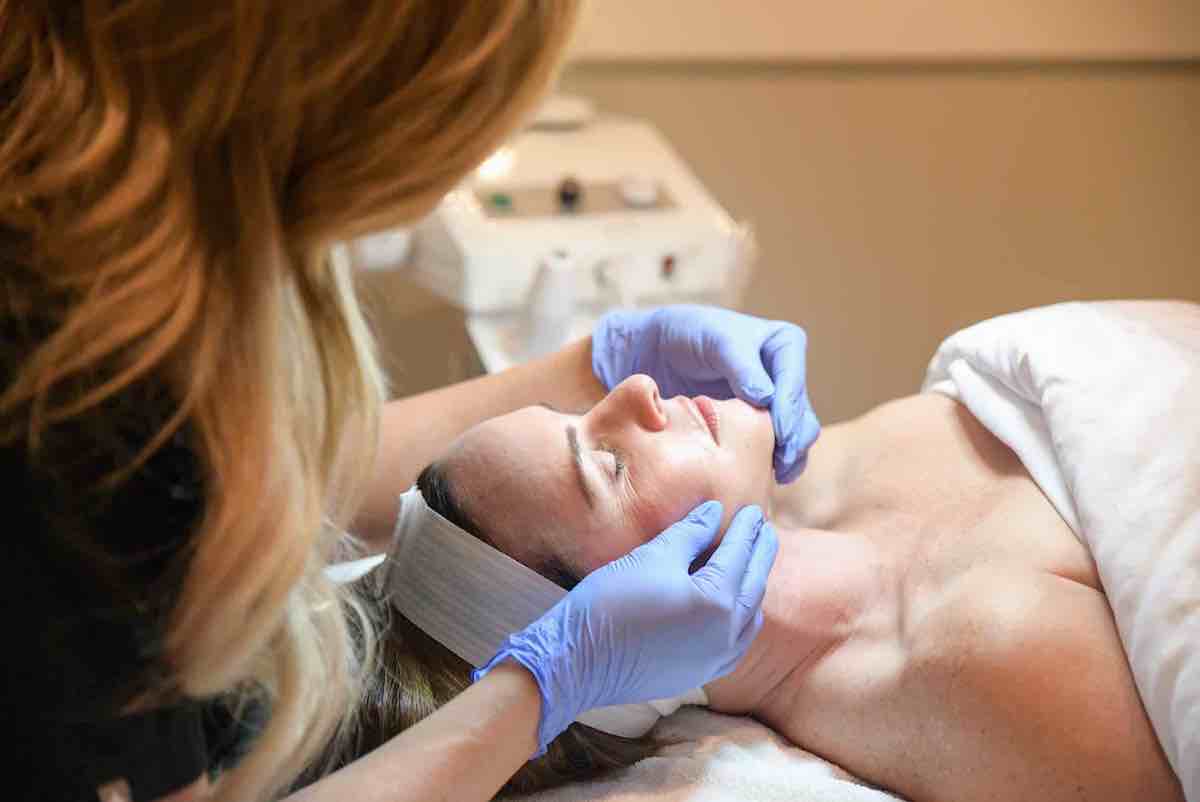
By Meghan Henricks, LE
How to Identify Your Skin Type
The most important step in caring for your skin is knowing and understanding your skin type. Identifying your skin type is essential to knowing which skin products and skin treatments are going to be most compatible with your skin. When you use the proper skincare, you can experience optimal skin health. At beyond | Aesthetics, one of our goals is to help you have a clearer understanding of your skin type and which products would be most beneficial for you.
Why is Skin Type Important?
Your skin is your largest organ of the body, and is as complex as our lungs, heart, and other vital organs. Skin care can be overwhelming and confusing, especially with TikTok and Instagram influences. The best thing you can do is have an aesthetician do a skin analysis to identify your skin type to create a game plan for your individual goals. Using products that are not specialized to your skin type can actually cause an increase of breakouts, inflammation, irritation, oiliness, and excessively dryness.
Skin Type vs. Skin Condition
One of the first things to understand is the difference between a skin type and skin conditions. The 4 different skin types are dry, oily, combination, and normal. Your skin type is usually genetic.
There are multiple skin conditions that can change due to the current state of the skin. Components that can alter skin condition are: dehydration, sensitization, and acne. These changes in our skin, which can be caused by circumstances or seasonality, can lead to barrier damage, irritation, redness, flaking, or sensitivity.
How to Identify Your Skin Type
We recommend a professional evaluation for the most accurate results. However, there are
a couple ways to identify your skin type at home:
- You can conduct a bare face test in which you wash your face, wait 30 minutes to 1 hour with nothing on the skin to see how your face feels. Dry skin type will typically feel tight at this mark of time while oily skin will typically feel waxy or oily.
- Another way to identify skin type is a blot test in which you use blotting paper 30 minutes after washing your face. After blotting, hold the paper up to light and see how much oil has been absorbed into the paper. The more oily the skin is, the more oil will be noticed on the paper.
Skin Types
- Dry: Dry Skin is a genetic skin type that has a lack of oil in the skin. As we age, individuals might notice their skin become drier due to aging factors. Dry skin can feel tight and be a little flaky. Dry skin types will have smaller pores and a duller complexion.
- Oily: Oily skin type is an excess of oil in the skin. Oily skin usually has larger pores, and people will feel a waxy and oily consistency on the skin throughout the day. This skin type is more supple and has fewer fine lines and wrinkles.
- Combination: Combo skin type is a combination of the two skin types listed above. This skin type will experience areas of dryness and flaky and areas of oiliness, such as an oily T zone, and dry cheeks and outer face. Combination skin type can be tricky to address but medical grade skincare can aid in the balance of this skin.
- Normal: Normal skin type will feel pretty comfortable and not necessarily feel one extreme or the other with oil or dryness.
Skin Conditions
Skin conditions can affect any skin type and are usually due to an imbalance in the skin during that time frame. This is important to consider when picking products specially for your skin type. When patients are using products that are too aggressive or not matching their skin type, they will notice significant changes to the condition of their skin.
The 3 Most Common Skin Conditions
- Dehydrated: Dehydrated skin is a lack of water and hydration. I try to stress the importance of drinking water throughout the day to help keep your skin hydrated and balanced. Dehydrated skin can look like dry patches, rough texture, and overall dull with emphasized fine lines and wrinkles.
- Sensitized: I frequently see sensitized skin due to barrier damage and improper products being used. An initial red flag of sensitized skin is burning, itching, inflammation, and redness experienced before or while applying products. Patients may also experience sensitive skin if they are sensitized to fragrance or any additives that result in inflammatory reactions and irritation.
- Acne: This skin condition occurs when oil and dead skin cells clog pores. Acne occurs in many different forms, such as cysts, red inflamed pus filled pimples, non inflamed closed pustules, and black heads. While many different contributing factors may cause acne, it is important to be on proper skin care for your skin type to initially target the bacteria and balance the skin. Properly exfoliating and moisturizing will help regulate breakouts and minimize them in the future.
Nourish Your Skin
Remember that the best way to get the correct information about your skin type is to see an aesthetician and receive a facial or skincare consultation for a skin analysis. This allows you and your aesthetician to come up with a game plan on how to specifically target and achieve your goals!Contact us to schedule a skincare appointment in Ventura or Camarillo.
_______________________________________________________________________________________________
Blog Category: [Copywriter]
SEO Title: Identify Your Skin Type | Best Products for Your Skin Type
SEO Description:Is your skin dry or dehydrated? Skincare specialists at beyond | Aesthetics in Camarillo and Ventura, CA explain how to identify your skin type and skin condition. Learn more
